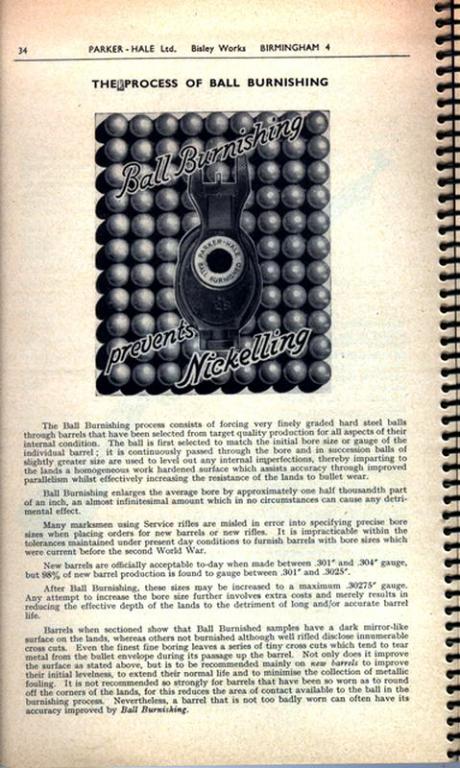-
Legacy Member

Ball Burnishing??
No, the question isn't about the process, but how often were service rifles furnished with ball burnished barrels?
I have a No4 Mk1/2 that was acquired direct from the military and it has a ball burnished barrel. The rifle was originally issued to my regiment for cadet use; that being the case would it have come from Ordonance Stores, or were cadet rifles sometimes purchased from the trade? (It was brand new when I got it)
Information
 |
Warning: This is a relatively older thread
This discussion is older than 360 days. Some information contained in it may no longer be current. |
|
-
-
09-15-2017 09:13 PM
# ADS
Friends and Sponsors

-
Legacy Member

That's an interesting one Harry, my gut feeling (or assumption) would be that the hand of Parker Hale or AJ Parker lies somewhere in the supply chain.
An old customer of mine regaled me once with stories of an SMLE at AJ Parkers whose furniture was made of lignum vitae, (it wasn't a success!) but went on to say that the RAF's shooting team always went to AJ Parker's for their rifles. I'm guessing this would have been mid or late 1950's.
-
-
-
I would say that this would have gone from the Cadet Foprce to the outside contractor to be accurised and not done as part of any military contract. Quite how ball burnishing worked - or didn't work, depending on your point of view and/or naivety - has mystified engineers and musicians* since it was dreamed up by '.....someone'. We say that it's based on fuzzy logic. Anyway............. you'd often see a Cadet No4 with the 'Regulated by Fulton' mark on the nocks form and it was accepted that they'd been sent there for accurising.
*The people who know best about vibrating tubular instruments are those with a degree in music - for obvious reasons
-
-
Legacy Member

Can someone explain what ball burnishing is? I suspect it involves lapping the barrel.
-
-
As I understand, or DON'T understand it - and once again, it really depends on who you talk to or ask about it......... It involves drawing a series of gradually increasing sizes of ball bearings through the barrel until one size will draw through cleanly with the exact loading all the way along its path. This indicates that the bore is exactly parallel (ho, ho, ho.....) throughout its length. Yep....., that's it....., and it can ONLY increase the diameter don't forget - because someone clearly DID forget that simple fact. Alas, whoever invented this load of, er........., balls if you'll excuse the pun....., wasn't a metallurgist.
You might have established from this that while the......, yes........., mmmmm, I'm not totally in agreement with some part, say 99% of the notion. But each to his own as they say. Or as my great old and much respected Physics tutor, the late, great Prof Percy used to say to us as students '.....it wouldn't stand up to a great deal of close stupidity'
-
The Following 4 Members Say Thank You to Peter Laidler For This Useful Post:
-
Legacy Member

Huh, no that doesn't make sense.
-
-
Contributing Member


I assume that if the ball burnishing squeezed out small irregularities in the diameter of the rifling; it would actually change the width of the lands at the areas that were tight. After all the metal has to go somewhere! That does not seem like a good thing for the projectile.
Or is there a second part to the process that I'm not aware of?
Last edited by 30Three; 09-17-2017 at 12:10 PM.
-
-
Legacy Member

-
Thank You to Lithy For This Useful Post:
-
Legacy Member


Originally Posted by
WarPig1976

Can someone explain what ball burnishing is? I suspect it involves lapping the barrel.

-
The Following 2 Members Say Thank You to Hal O'Peridol For This Useful Post:
-
Legacy Member


Originally Posted by
30Three

After all the metal has to go somewhere!
I have visions of mushroomed lands.
-















 PM
PM











